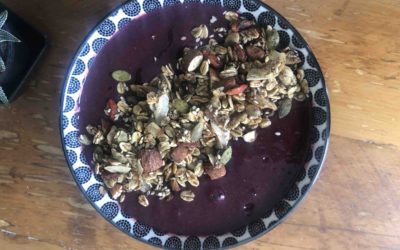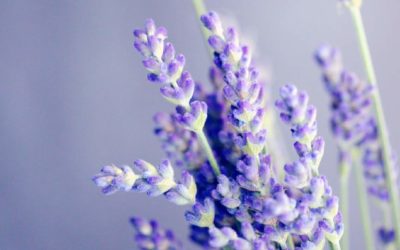Turmeric and ginger—two delicious medicinal foods
Recently I harvested a bumper crop (for me!) of both ginger and turmeric and enjoyed some immune supporting tea at the time of harvest (see more on this here). Now I’m back to rights 100% my attention turns to transforming my harvest into many delicious items. However, being so abundant I also need to consider how to preserve them – which led me to making a batch of golden paste so I can enjoy the health benefits of turmeric (anti-inflammatory, antioxidant, hepatic/liver supporting) and ginger (warming, digestion-enhancing, anti-inflammatory) at a later date (see below). What I also loved was I had so much I shared some of my crop with friends, along with simple directions on how to grow these beautiful healthful plants. As long as you have a sunny spot, I’d encourage everyone to give it a go – you’ll save yourself money purchasing these spicy delights and they both preserve pretty well.
Growing ginger and turmeric is easy—just add sun!
All you need to get started is some organic ginger (or turmeric or galangal, maybe all three!) – a few small pieces will do. The reason I say organic is you want nothing that has been sprayed with a growth retardant or some other chemical that will stop it growing. I leave my pieces of ginger outside on the bench to dry off the skin a little before planting when it’s super fresh — you might do the same or leave it on the kitchen bench for a day or two instead. Once the skin looks and feels dry (not shrivelled though), plant it out into a large pot that has the full sun as much as possible, and water a little every few days. They are pretty tolerant, so if you forget sometimes it should still work! [Edit – a friend just asked ‘when’s the best time to plant ginger?’ so as I forgot to put that here then I’d say early Spring — but in Australia in QLD or as south as Sydney then as soon as it’s warm during the day — so mid-late winter is fine. Mine are planted already!).
It’s exciting watching anything grow and a plant’s leaves unfurl — my ginger and turmeric are the same, though they look very different (ginger has slim leaves, turmeric large flat ones). Once the plant has grown full size they often flower beautifully, but even if not you will still be able to harvest later. You’ll have to wait many months for the whole cycle to occur depending on when you plant. For me it’s winter, so my plants are still tucked away in the earth for now. Be patient.
Timing your harvest is the key to success
Allow the foliage to grow then eventually yellow and then the plant will begin to wilt back — that’s the time to ‘lift’ out your rhizomes (the part which we know as turmeric or ginger). What has happened by this time is the plant has created all its energy and stored it by fattening up the fleshy rhizomes underground, ready to grow again next season — these are the parts we harvest and use for spice.
Dig these up gently, cut off the leaves (which can be composted), and remove the straggly roots. Give the big chunky rhizomes a good wash to get all the dirt off. Ginger will be a creamy, golden colour and very juicy when this fresh. Your turmeric will be a quite different shape and vibrant orange inside a browner skin. All you need to do at this point is to break off enough pieces to repeat the above steps for next years plants and then plan what you want to do with the rest.
I decided to convert all my turmeric and a quarter of my ginger into golden paste so I could freeze it. Here is my recipe and method. A bit rustic, but it suits my purposes!
Golden paste recipe
Ingredients:
Fresh organic turmeric
Fresh organic ginger
Black peppercorns
Organic coconut oil
Method:
Peel your turmeric roots (you can use a spoon to scrape off the skins) – wear kitchen gloves or your fingers will turn yellow! Weigh what you have, then the ratio is to use half as much ginger rhizome (peel as above). I ended up with 400 g turmeric and so added 200 g ginger.
Chop roughly and add to a food processor.
Grind some black peppercorns (the amount you use will depend on the volume of turmeric/ginger you have, but I used 10 peppercorns for the above mix). Pepper is traditionally used to help improve the absorption of the turmeric constituents from the gut and gives another warming digestive quality to the paste, which I love. Add the ground peppercorn powder to the food processor.
Add 1-3 tablespoons of organic coconut oil to the mix, depending on how much you are making. I started with two, processed for a minute, then decided to add another tablespoon. What you are looking for is a well-mixed but slightly grainy-looking paste (these are the fibres from the ginger and turmeric). You don’t want obvious chunks at all so scrape down the sides a couple of times, and ensure your mix is even — you could make it even finer but I don’t mind a little texture.
The processing of my mix took about five minutes all up (including pushing down the sides twice and adding the extra oil). Coconut oil offers a little fat — traditionally used to help the absorption of turmeric’s medicinal constituents. I also love the little hit of healthy fat — it helps feed the cells lining my digestive system and is ‘food as medicine’ for soft, supple skin. Working from the inside > out!
 For the visual people out there, you should end up with a beautiful pale yellow mix. I divide this up into ice cube trays using a teaspoon and freeze. Then turn out into ziplock bags to store in the freezer. My batch made 22 ‘cubes’ — here are some of them (as you can see I’m not a food stylist — but this is the real deal!)
For the visual people out there, you should end up with a beautiful pale yellow mix. I divide this up into ice cube trays using a teaspoon and freeze. Then turn out into ziplock bags to store in the freezer. My batch made 22 ‘cubes’ — here are some of them (as you can see I’m not a food stylist — but this is the real deal!)
Spice up your day with golden milk
To make golden milk — just pop a cube into a small pan with your choice of ‘milk’. I don’t drink dairy milk of any kind so my preference is almond milk, with a spoon of honey! You’ll need to keep an eye on it so it melts gently — stir it occasionally. I like mine as is, or occasionally I’ll add a sprinkle of cinnamon or nutmeg on top — all are good. You’ll need a spoon though, to eat up all the bits of ginger and turmeric that will fall to the bottom — to not waste their benefits and even an extra spoon of fibre is good for your gut microbiota!
Be warned — anything with turmeric in it can stain, so don’t spill it.
This golden milk is my favourite in cooler months. I love its warming, slightly spicy flavour — I have it mid-morning, but it would also work well as part of an ‘unwinding’ ritual in the evening.
Now I just have to plan what to do with the rest of my ginger!
Enjoy.




